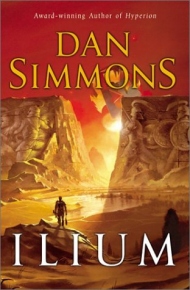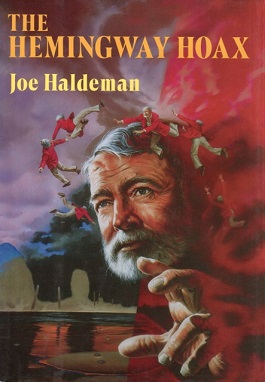Related Research Articles

"'—And He Built a Crooked House—'" is a science fiction short story by American writer Robert A. Heinlein, first published in Astounding Science Fiction in February 1941. It was reprinted in the anthology Fantasia Mathematica in 1958, and in the Heinlein collections The Unpleasant Profession of Jonathan Hoag in 1959 and The Best of Robert Heinlein in 1973. The story is about a mathematically inclined architect named Quintus Teal who has what he thinks is a brilliant idea to save on real estate costs by building a house shaped like the unfolded net of a tesseract. The title is paraphrased from the nursery rhyme "There Was a Crooked Man".

The New York City Subway is a rapid transit system in the New York City boroughs of Manhattan, Brooklyn, Queens, and the Bronx. It is owned by the government of New York City and leased to the New York City Transit Authority, an affiliate agency of the state-run Metropolitan Transportation Authority (MTA). Opened on October 27, 1904, the New York City Subway is one of the world's oldest public transit systems, one of the most-used, and the one with the most stations, with 472 stations in operation.

The 42nd Street Shuttle is a New York City Subway shuttle train service that operates in Manhattan. The shuttle is sometimes referred to as the Grand Central/Times Square Shuttle, since these are the only two stations it serves. The shuttle runs at all times except late nights, with trains running on two tracks underneath 42nd Street between Times Square and Grand Central; for many decades, three tracks had been in service until a major renovation was begun in 2019 reducing it to two tracks. With two stations, it is the shortest regular service in the system by number of stops, running about 2,402 feet (732 m) in 90 seconds as of 2005. The shuttle is used by over 100,000 passengers every day, and by up to 10,200 passengers per hour during rush hours.

The 5 Lexington Avenue Express is a rapid transit service in the A Division of the New York City Subway. Its route emblem, or "bullet", is colored apple green since it uses the IRT Lexington Avenue Line in Manhattan.

Ilium is a science fiction novel by American writer Dan Simmons, the first part of the Ilium/Olympos cycle, concerning the re-creation of the events in the Iliad on an alternate Earth and Mars. These events are set in motion by beings who have taken on the roles of the Greek gods. Like Simmons' earlier series, the Hyperion Cantos, the novel is a form of "literary science fiction" which relies heavily on intertextuality, in this case with Homer and Shakespeare, as well as periodic references to Marcel Proust's À la recherche du temps perdu and Vladimir Nabokov's novel Ada or Ardor: A Family Chronicle. In July 2004, Ilium received a Locus Award for Best Science Fiction Novel of 2004.
Armin Joseph Deutsch, was an American astronomer and science fiction writer.

Raymond Fisher Jones was an American science fiction author. He is best known for his 1952 novel This Island Earth, which was adapted into the eponymous 1955 film.

Most trains on the New York City Subway are manually operated. As of 2022, the system currently uses Automatic Block Signaling, with fixed wayside signals and automatic train stops. Many portions of the signaling system were installed between the 1930s and 1960s. Because of the age of the subway system, many replacement parts are unavailable from signaling suppliers and must be custom built for the New York City Transit Authority, which operates the subway. Additionally, some subway lines have reached their train capacity limits and cannot operate extra trains in the current system.

The Hemingway Hoax is a short novel by science fiction writer Joe Haldeman. It weaves together a story of an attempt to produce a fake Ernest Hemingway manuscript with themes concerning time travel and parallel worlds. A shorter version of the book won both a Hugo Award and a Nebula Award for Best Novella in 1991.

"Coming Attraction" is a science fiction short story by American writer Fritz Leiber, originally published in the second issue of Galaxy Science Fiction with illustrations by Paul Callé. The story was nominated for a Retro Hugo Award in 2001.
"The Queen of Air and Darkness" is a science fiction novella by American writer Poul Anderson, set in his History of Rustum fictional universe. Originally published in the April 1971 issue of The Magazine of Fantasy and Science Fiction, it won the Hugo Award for Best Novella and the Locus Award for Best Short Story in 1972, and the Nebula Award for Best Novelette in 1971.
"26 Monkeys, Also the Abyss" is a fantasy short story by American writer Kij Johnson, published in 2008 on the American magazine Asimov's Science Fiction. It was nominated for the 2009 Nebula Award for Best Short Story and the 2009 Hugo Award for Best Short Story. It won the 2009 World Fantasy Award for Best Short Fiction and the Asimov's readers' award for best short story.

Moebius is a 1996 Argentine science fiction film directed by Gustavo Mosquera and starring Guillermo Angelelli, Roberto Carnaghi and Annabella Levy. It is based on the classic 1950 short story "A Subway Named Mobius" by Armin Joseph Deutsch. The film is set in the Buenos Aires Underground, in a dark and dystopian Buenos Aires.
Tina Connolly is an American science fiction and fantasy writer and poet. Her 2012 book Ironskin was nominated for the Nebula Award for Best Novel. Her flash fiction podcast "Toasted Cake" won the Parsec Award for Best New Speculative Fiction Podcaster/Team.

The Best of Henry Kuttner is a collection of science fiction and fantasy short stories by American author Henry Kuttner. It was first published in hardback by Nelson Doubleday in February 1975 and in paperback by Ballantine Books in April of the same year as a volume in its Classic Library of Science Fiction. The book was reissued in trade paperback by Del Rey/Ballantine in March 2007 under the alternate title The Last Mimzy: Stories. and in ebook by Gateway/Orion in May 2014 and Diversion Books in August 2014. It was later gathered together with Fury and Mutant into the omnibus collection Fury / Mutant / The Best of Henry Kuttner, issued in trade paperback and ebook by Gollancz in December 2013. It has also been translated into Spanish.

The Best of Lester del Rey is a collection of science fiction short stories by American author Lester del Rey. It was first published in paperback by Del Rey/Ballantine in September 1978 as a volume in its Classic Library of Science Fiction, with a Science Fiction Book Club hardcover edition following in December of the same year. It was reprinted by Del Rey Books in March 1986, February 1995, and June 2000. The book has been translated into German.

The Best of Murray Leinster is the title of two collections of science fiction short stories by American author Murray Leinster. The first, a British edition edited by Brian Davis, was first published in paperback by Corgi in December 1976. The second, an American edition edited by J. J. Pierce, was first published in paperback by Del Rey/Ballantine in April 1978 as a volume in its Classic Library of Science Fiction. The American edition has since been translated into German and Italian.

The Best of Cordwainer Smith is a collection of science fiction short stories by American author Cordwainer Smith, edited by J. J. Pierce. It was first published in hardback by Nelson Doubleday in July 1975 and in paperback by Ballantine Books in September of the same year as a volume in its Classic Library of Science Fiction. The Ballantine edition was reprinted in October 1977 and July 1985. Phoenix Pick issued a new edition in trade paperback and ebook in April, 2017. A British paperback edition under the alternative title The Rediscovery of Man was published by Gollancz in June 1988, and reissued in 1999, 2003, and 2010; Gollancz also brought out hardcover and ebook versions in September 1988 and November 2012, respectively. The book has also been translated into German.

The Best of Fredric Brown is a collection of science fiction short stories by American author Fredric Brown, edited by Robert Bloch. It was first published in hardback by Nelson Doubleday in January 1977 and in paperback by Ballantine Books in May of the same year as a volume in its Classic Library of Science Fiction. The book has been translated into German and Spanish.
References
- ↑ "A Subway Named Mobius", Internet Speculative Fiction Database, retrieved July 29, 2020.
- ↑ "Moebius", Argentina Sci Fi, archived from the original on March 31, 2012.